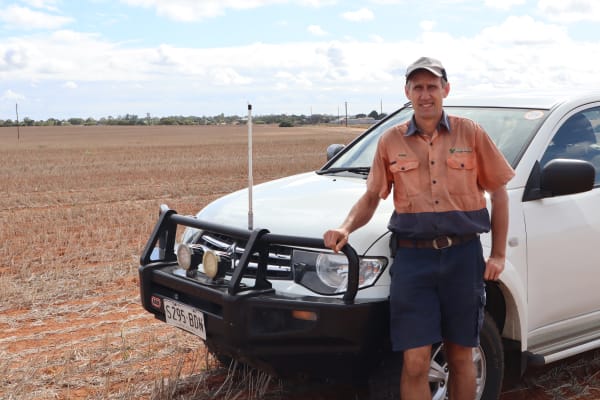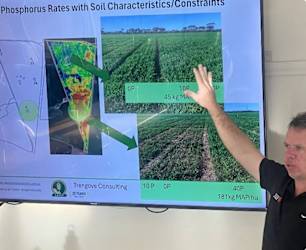IT was a tale of ups and downs for Riverland collaborative grain producer Bulla Burra’s last harvest.
On the positive end, the business completed one of its “best ever years” for growing, with yields high and prices strong according to general manager Robin Schaefer.
But with input costs – particularly of fertilisers and chemicals – on the rise, the crop was also the “most expensive” the local growers have ever produced.
“Prices were generally pretty good but they needed to be too,” Robin said.
“A lot of chemicals had risen in price because of flow-on issues from Covid and China, because a lot of our chemistry comes out of China.
Worldwide plants trying to compensate couldn’t, which drove the pricing of chemicals up.
“Also fertiliser prices just went through the roof because of the conflict in Ukraine. A lot of fertiliser comes out of Russia, so that impacted us to some extent.
“China also shut down a lot of fertiliser manufacturing, which was probably the bigger one for us.
“A lot of our fertiliser pricing doubled, and then some, and the same was true of some of our key chemicals like glyphosate.
“Plus, with a wet spring, we had to protect our crops from higher pressure from pests and disease populations than what we normally would need to, so there was a lot more cost in those crop protection products as well.”
Despite the challenges, Robin said legume yields were “unprecedented”, along with strong wheat and barley crops, which helped the state to record grain production and farm gate value in 2022/23.
“We’re pretty fortunate in the grain industry because we have on any day here probably 10 to 12 different exporters that we can deal with for all of our cereal crops,” he said.
I think it’s a lot more of an open market and it’s easier for us to store our product if we’re not happy with the price.
“Our selling period can be anywhere from February the year before harvest right through to May or June the year after harvest.
“You’re trying to pick the better times in the market and trying to stay away from the troughs.”
The size of last year’s crop, along with weather factors, contributed to a late finish for the 2022/23 harvest, which also caused a late start for seeding this year.
Robin said seeding on his farm started just after Easter, as opposed to his usual start time at the beginning of April.
“We weren’t quite ready then because of the challenges thrown at us due to the late harvest…” he said.
“The growing season last year was so long and the rains continued later than usual.
“It was a very cool and mild spring so the crops took a long time to fill and finish, so we started (harvest) quite late.
“Last year the crops sowed and germinated very early so we were thinking it would be an early harvest.
We had quite good harvesting weather but the big yields meant everything goes a bit slower, which we don’t complain about.
“Normally we like to be finished before Christmas, but it was just after mid-January we finished, and some farmers around the district were well into February before they were finished.
“A reasonable amount of summer weed management, and staff changes too, have added some extra challenges.”
Since the launch of the collaborative farming venture in 2009 with the joining of executive director John Gladigau’s family farm in Alawoona with the Schaefer farm in Loxton, Bulla Burra have also been prominent in assisting research into new technologies.
“We’ve embraced technology, and the scale (of the collaborative venture) has allowed us to do that,” Robin said.
“We’ve been at the forefront of that as far as machine technology goes.
“We’ve had a lot of research done on our place because we’ve embraced the opportunity for researchers to come and do their research on new varieties and farming techniques.
“I think a lot of farmers throughout the district have benefitted from that.”
One area of technological innovation within the grain industry that is yet to trickle down into local farms is genetic modification (GM).
A statewide moratorium on the cultivation of GM crops in South Australia was lifted in late 2020 – except for Kangaroo Island where the ban remains.
“We haven’t seen anything specifically on our farm,” Robin said.
“A lot of that technology is very expensive for our environment.
“It’s a wait and see game. A lot of the newer technology that they’re using now bypasses the GM technology anyway, (but) it’ll be interesting to see where it goes in the future…
At the end of the day, it’s not only about what we do on our property, but also the market for it as well.
“There’s no point growing a product if there’s no market at the end.
“It’s a combination of asking does it fit into my production, is it a useful tool that’s going to make my business more profitable, and are we going to end up with a product we can still market?”








